
Guantánamo Bay prison is a monstrosity where hundreds of suspected terrorists have been held and tortured for years, many without being charged of any crime.
To keep their humanity, many of the inmates produced paintings that were featured at a May 2 screening premiere event in Beverly Hills of I Am Gitmo, a feature film about the human rights abuses that occurred at Guantánamo.
The paintings are also currently being spotlighted in Burbank, California, at Cinema Libre Studio, which produced I Am Gitmo, and have been shown at the European Parliament.
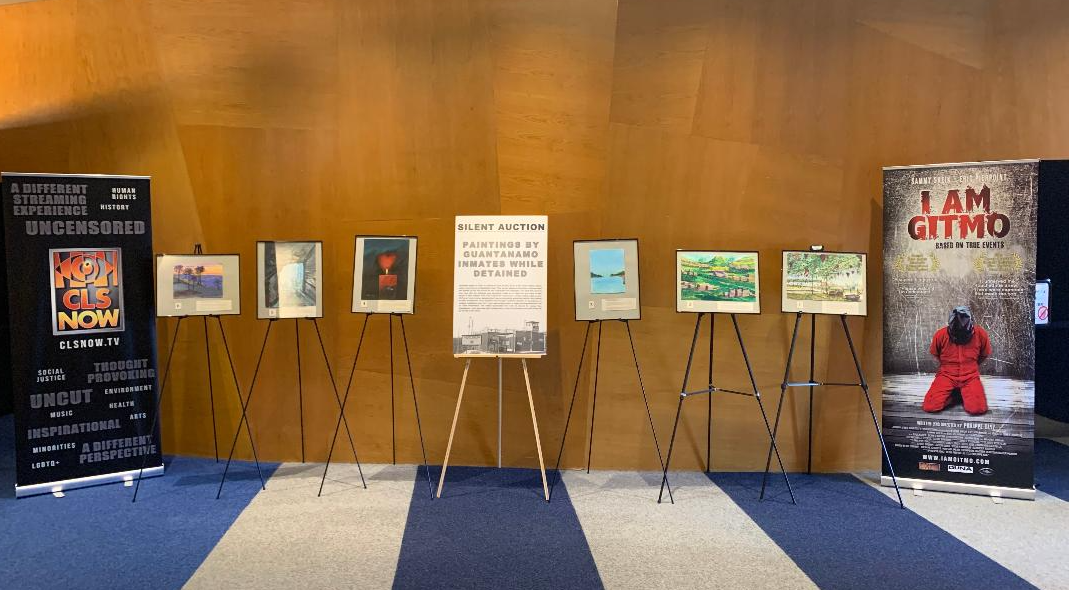
Directed by Philippe Diaz, whose previous film credits include a documentary on poverty narrated by Martin Sheen, I Am Gitmo, spotlights the case of an Egyptian who was tortured for years at Guantánamo after being captured in a bounty program in which the U.S. military paid Afghan villagers $2,000 to $25,000 to turn in terrorist suspects.
The CIA never checked on the guilt of these suspects.
The U.S. military fabricated evidence to make it look like captives taken in the bounty program were guilty while telling the public that Guantánamo Bay housed the worst terrorists.
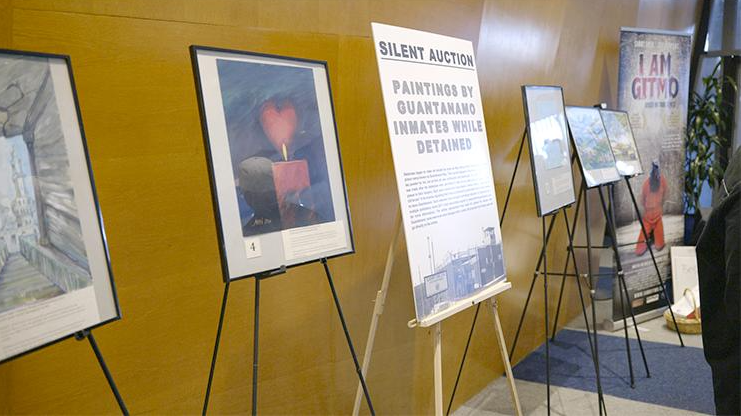
After 22 years of operation, only four inmates have been convicted of any crimes. The facility today still houses more than 30 inmates, many of whom are geriatrics suffering from serious mental health deterioration owing to the years of isolation and torture.

In part as a form of therapy and a way to pass their time productively, detainees began to make art almost as soon as they arrived at Guantánamo, carving designs in Styrofoam cups and using tea powder for ink.
Initially, the art was destroyed. The work that survives was made after the detainees were permitted to take an art class and give some of their pieces to their lawyers.
Each work outside the camp bore a stamp reading “Approved by U.S. Forces” on its reverse, signaling that it was scrutinized by authorities before it was cleared to leave Guantánamo. Such artworks have brought worldwide attention to Guantánamo in multiple exhibitions since 2017 (visit www.hrtlaw.org/art or www.artfromguantanamo.com for more information).
The artists represented were all cleared for release from Guantánamo; none was ever charged with a crime.
Most of the paintings are non-political, though one (featured at the beginning of this article) has an American flag covered by prison bars, and another, by Yemeni Sabri al-Qurashi, depicted a scene from Guantánamo.
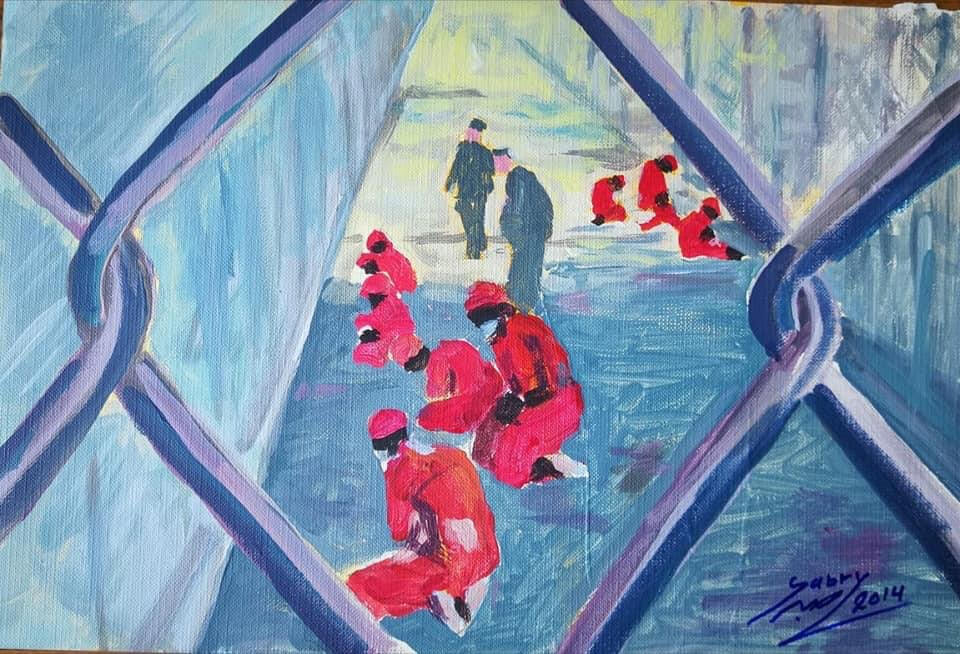
Another of al-Qurashi’s paintings showed the Statue of Liberty in front of a razor-wire fence, suggesting that U.S. was not actually a beacon of liberty.
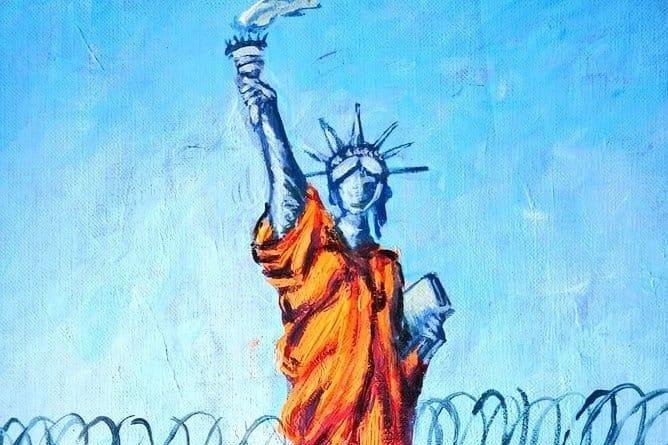
A number of inmate paintings depict the waters surrounding Guantánamo Bay prison that were blocked from the inmates’ view. The sea “means freedom that no one can control or own, freedom for everyone,” said former Guantánamo detainee Mansoor Adayfi.

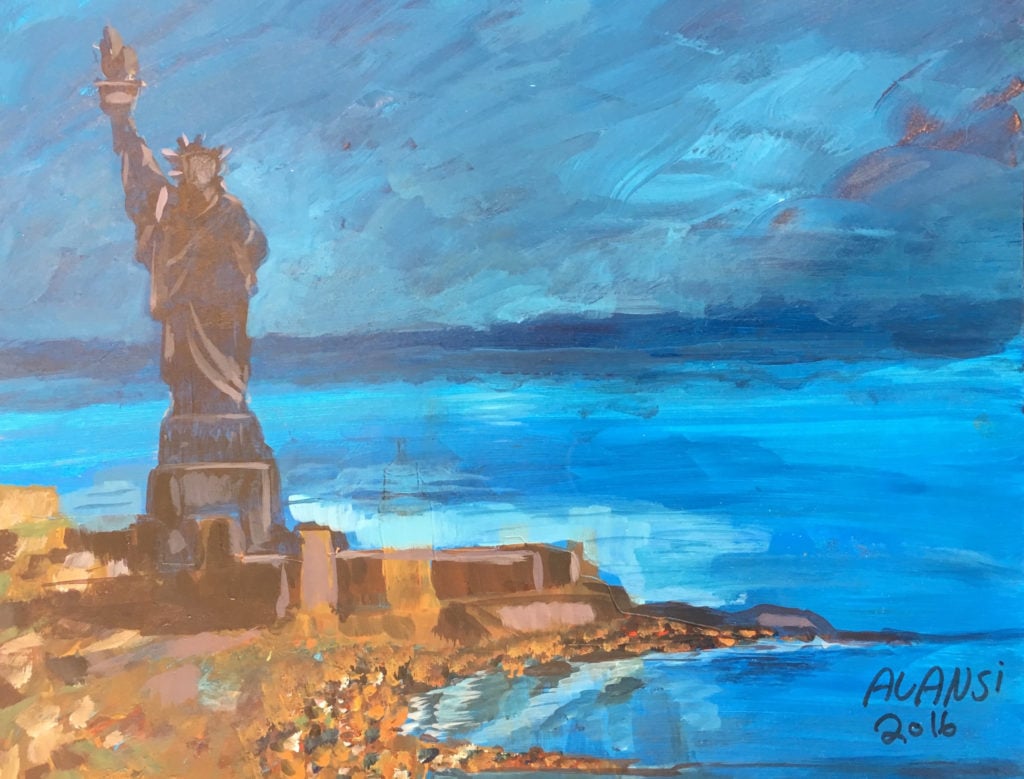
The yearning from freedom and miscarriage of justice are the theme of paintings by Khalid Qasim, a Yemeni Guantánamo prisoner who acknowledged once meeting Osama bin Laden but said that bin Laden gave him only a passing greeting.

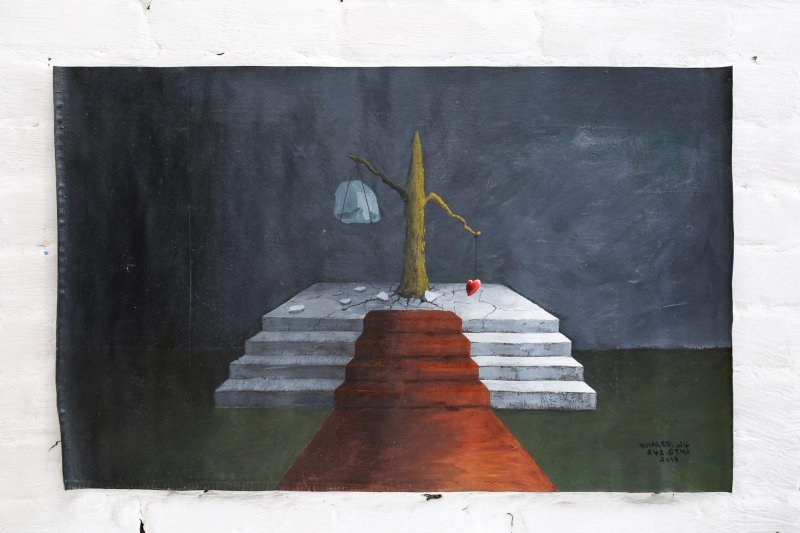
Another interesting painting by Ahmed Rabbani depicts a beautiful mosque at a distance behind a wall, the theme being that the beauty of the palace was at a great distance and out of reach from the artist who was stuck at Guantánamo behind the wall.
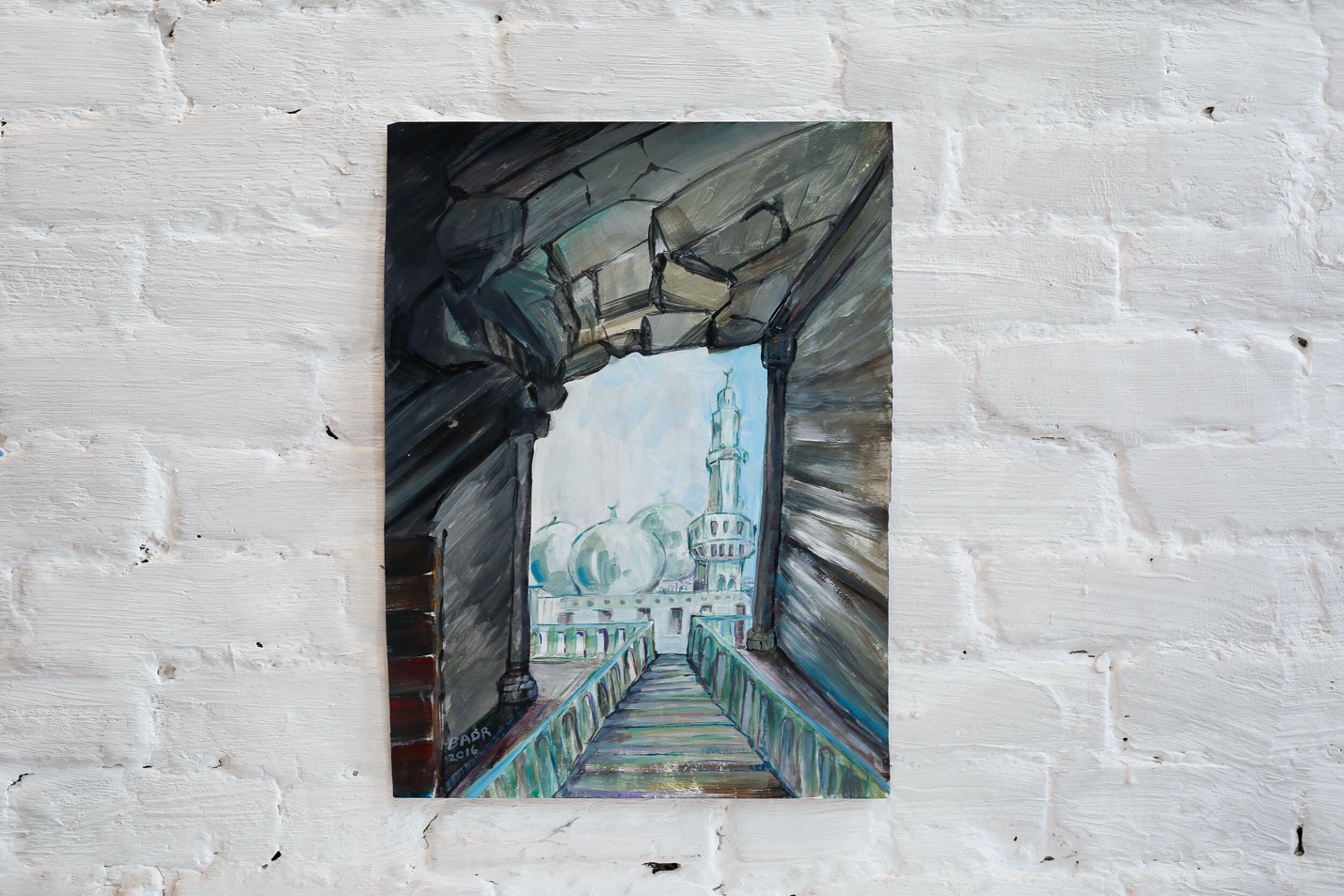
In “Binoculars Pointing at the Moon,” Rabbani, who is Pakistani, depicts large tubular telescopes projected from the tops of multi-story buildings toward an enormous, luminous moon.
According to M. Neelika Jayawardane, a professor of English at the State University of New York-Oswego, the telescopes signify the attempts by the U.S. government and its interrogation apparatus to render the prisoners controllable under interrogation and constant surveillance.

Muhammad Ansi, a Yemeni detained at Guantánamo for almost 15 years before being released to Oman in January 2017, pictured an unseen man sticking flowers through a prison window, his hands yearning for escape and flowers representing a peace offering.
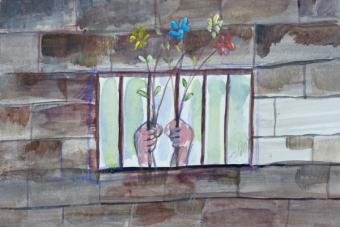

Ansi often symbolically represented his family members in his work, with his siblings sometimes represented as flowers and his mother mourning for him in the form of a disembodied eye.
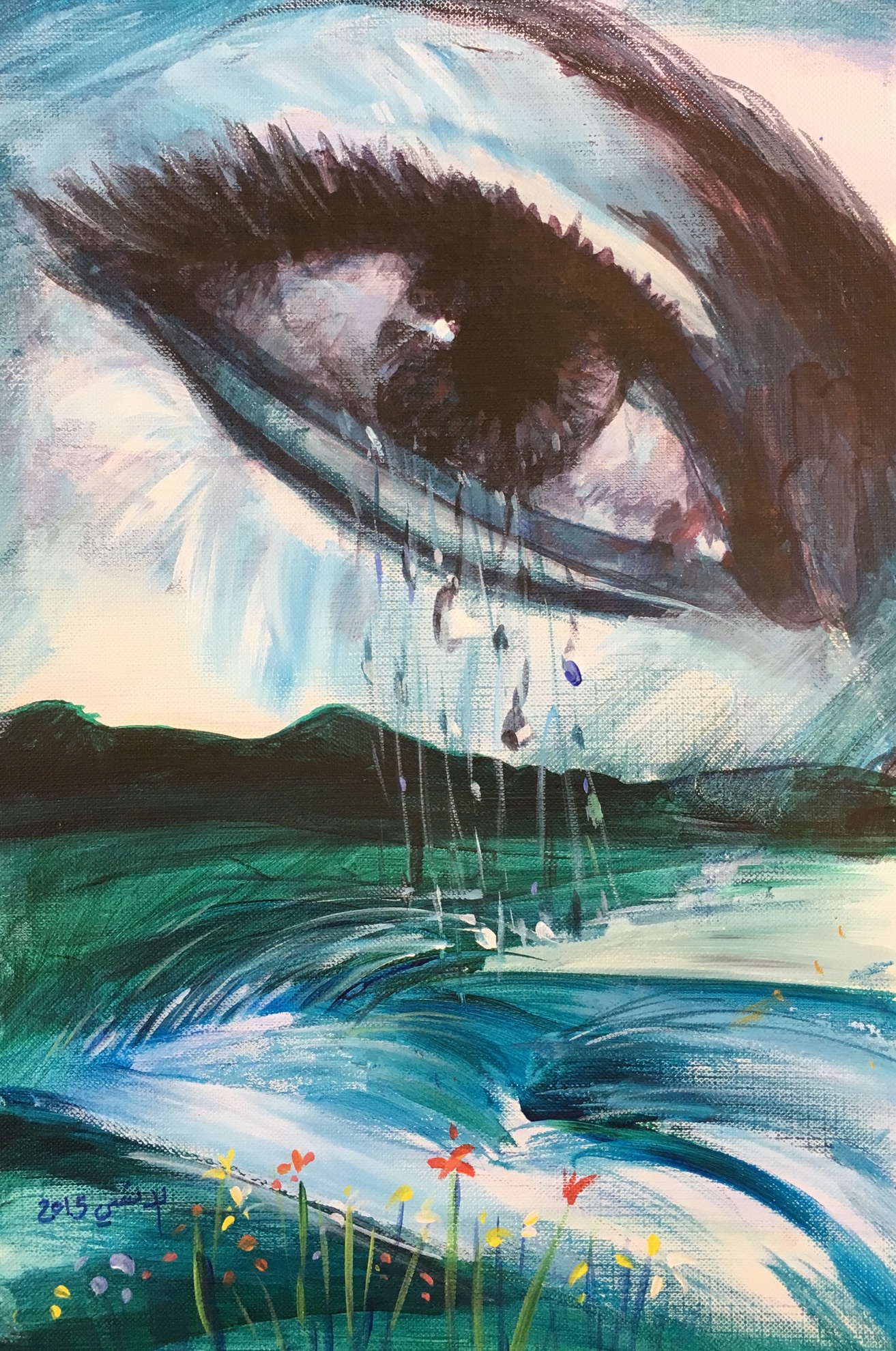
Ansi additionally painted a portrait of a drowned Syrian refugee whose body had washed ashore. The image was based on a well-known 2015 photograph of Alan Kurdi, a two-year-old Syrian Kurd, whose body washed ashore.
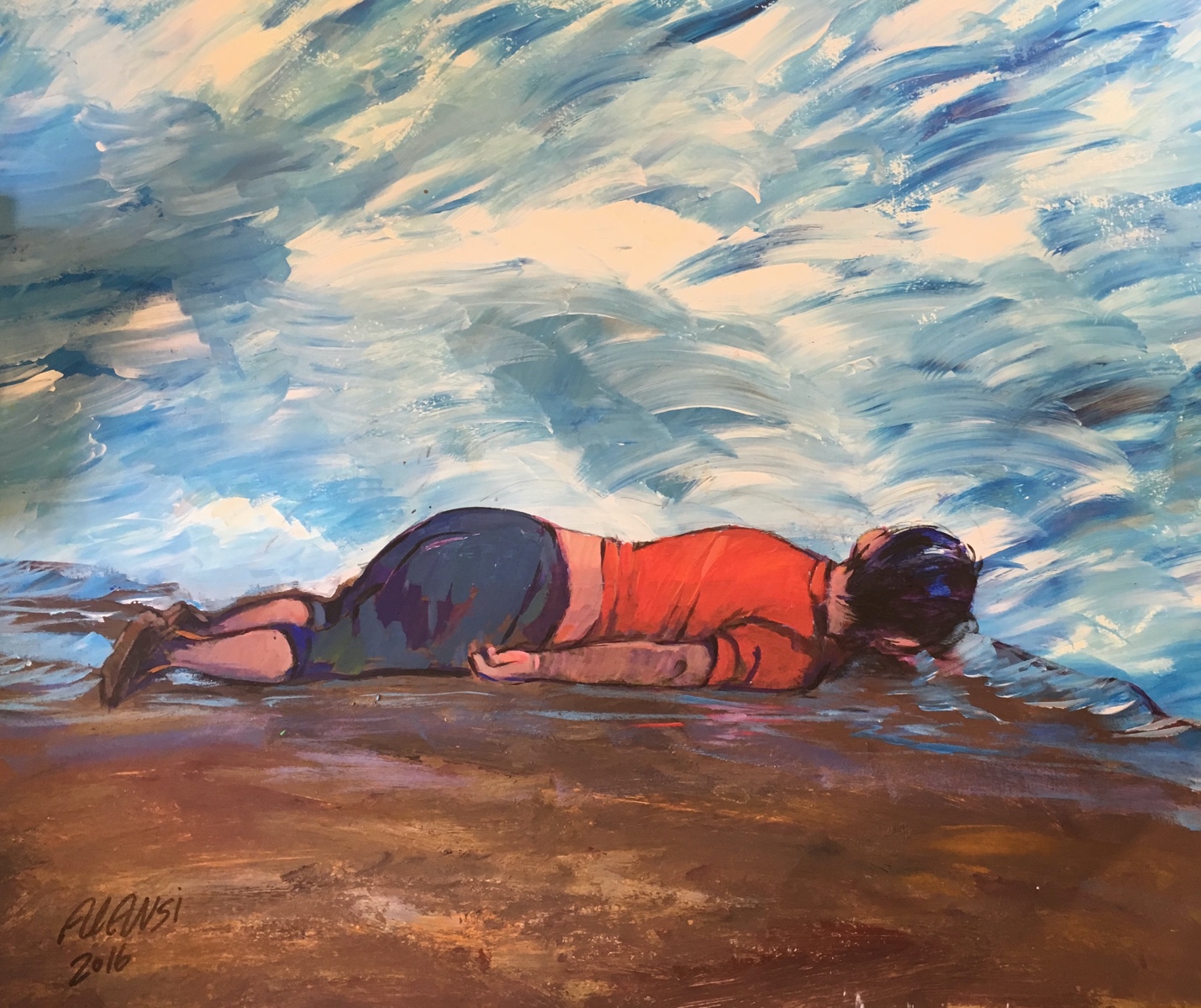
This latter painting points to vast human suffering in the Middle East, bred in large part by U.S. policies of which Ansi was also a victim.
There is hope that the exhibits of paintings, combined with the film I Am Gitmo, will lead to an upsurge in demand to close Guantánamo Bay prison once and for all and to hold top Bush administration officials legally accountable for their crimes.
Anyone interested in purchasing paintings by Guantánamo detainees may contact Philippe Diaz, the founder and director of the Cinema Libre Studio. His email is: ph.diaz@cinemalibrestudio.com.

CovertAction Magazine is made possible by subscriptions, orders and donations from readers like you.
Blow the Whistle on U.S. Imperialism
Click the whistle and donate
When you donate to CovertAction Magazine, you are supporting investigative journalism. Your contributions go directly to supporting the development, production, editing, and dissemination of the Magazine.
CovertAction Magazine does not receive corporate or government sponsorship. Yet, we hold a steadfast commitment to providing compensation for writers, editorial and technical support. Your support helps facilitate this compensation as well as increase the caliber of this work.
Please make a donation by clicking on the donate logo above and enter the amount and your credit or debit card information.
CovertAction Institute, Inc. (CAI) is a 501(c)(3) non-profit organization and your gift is tax-deductible for federal income purposes. CAI’s tax-exempt ID number is 87-2461683.
We sincerely thank you for your support.
Disclaimer: The contents of this article are the sole responsibility of the author(s). CovertAction Institute, Inc. (CAI), including its Board of Directors (BD), Editorial Board (EB), Advisory Board (AB), staff, volunteers and its projects (including CovertAction Magazine) are not responsible for any inaccurate or incorrect statement in this article. This article also does not necessarily represent the views the BD, the EB, the AB, staff, volunteers, or any members of its projects.
Differing viewpoints: CAM publishes articles with differing viewpoints in an effort to nurture vibrant debate and thoughtful critical analysis. Feel free to comment on the articles in the comment section and/or send your letters to the Editors, which we will publish in the Letters column.
Copyrighted Material: This web site may contain copyrighted material the use of which has not always been specifically authorized by the copyright owner. As a not-for-profit charitable organization incorporated in the State of New York, we are making such material available in an effort to advance the understanding of humanity’s problems and hopefully to help find solutions for those problems. We believe this constitutes a ‘fair use’ of any such copyrighted material as provided for in section 107 of the US Copyright Law. You can read more about ‘fair use’ and US Copyright Law at the Legal Information Institute of Cornell Law School.
Republishing: CovertAction Magazine (CAM) grants permission to cross-post CAM articles on not-for-profit community internet sites as long as the source is acknowledged together with a hyperlink to the original CovertAction Magazine article. Also, kindly let us know at info@CovertActionMagazine.com. For publication of CAM articles in print or other forms including commercial internet sites, contact: info@CovertActionMagazine.com.
By using this site, you agree to these terms above.
About the Author

Jeremy Kuzmarov holds a Ph.D. in American history from Brandeis University and has taught at numerous colleges across the United States. He is regularly sought out as an expert on U.S. history and politics for radio and TV programs and co-hosts a radio show on New York Public Radio and on Progressive Radio News Network called “Uncontrolled Opposition.”
He is Managing Editor of CovertAction Magazine and is the author of six books on U.S. foreign policy, including Obama’s Unending Wars (Clarity Press, 2019), The Russians Are Coming, Again, with John Marciano (Monthly Review Press, 2018), Warmonger. How Clinton’s Malign Foreign Policy Launched the U.S. Trajectory From Bush II to Biden (Clarity Press, 2023); and with Dan Kovalik, Syria: Anatomy of Regime Change (Baraka Books, 2025).
Besides these books, Kuzmarov has published hundreds of articles and contributed to numerous edited volumes, including one in the prestigious Oxford History of Counterinsurgency .
He can be reached at jkuzmarov2@gmail.com and found on substack here.




Prisons in general are horrible places in most countries. I think you should also write about the situation in China which is very disturbing:
https://www.hrw.org/news/2024/01/31/china-religious-regulations-tighten-uyghurs